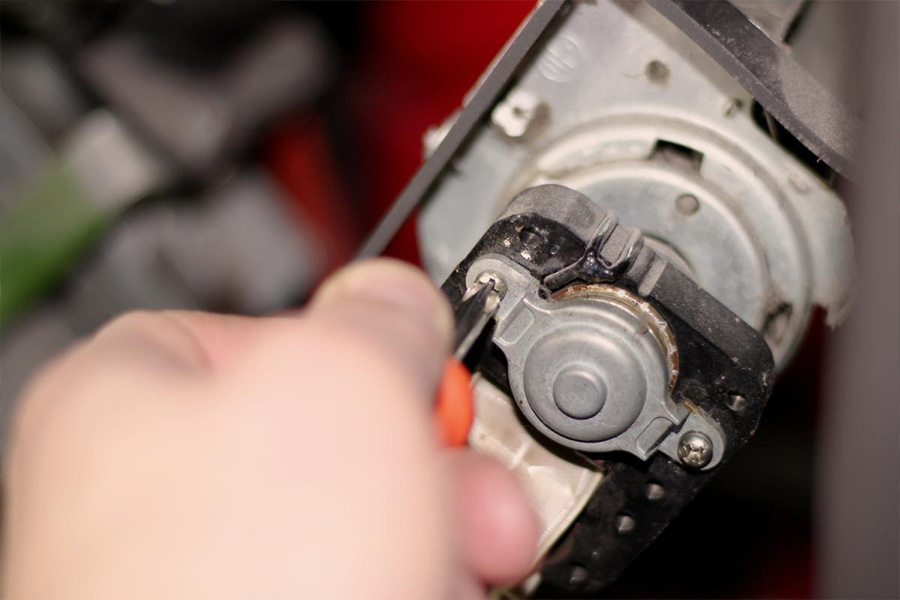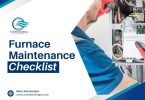Furnaces are vital appliances for keeping our homes warm and cozy, especially in cold seasons. However, similar to any mechanical system, furnaces can experience occasional problems. The early identification and resolution of these problems are crucial in preventing further damage and ensuring the efficient operation of your furnace. In this article, we will delve into ten most common furnace problems and offer solutions to help you maintain a cozy and well-heated home.
Common Furnace Problems And Solutions
Problem: Furnaces demand regular maintenance to perform at their best. Neglecting maintenance can lead to reduced efficiency, subpar heating performance, and even safety risks.
Solution: Schedule annual professional furnace maintenance. A trained expert will meticulously clean and inspect your furnace to ensure all components are functioning optimally.Furthermore, regularly changing air filters and maintaining a clean area around the furnace will prevent issues from arising.
2. Ignition Issues
Problem: Furnaces may encounter ignition problems, resulting in difficulties in starting or maintaining a flame. This can occur due to pilot light issues in older furnaces or electronic ignition problems in newer models.
Solution:
- For older furnaces with a pilot light, ensure it is properly lit.
- For newer furnaces, check for error codes on the control panel.
- If uncertainty persists or the problem continues, it is advisable to contact a qualified technician who can identify and rectify the issue.
3. Blower Fan Problems
 Problem: he blower fan is responsible for distributing heated air throughout your home. Any issues with the blower fan can lead to uneven heating or reduced airflow.
Problem: he blower fan is responsible for distributing heated air throughout your home. Any issues with the blower fan can lead to uneven heating or reduced airflow.
Solution: Examine the blower fan area for any debris or obstructions. If the fan is not operating efficiently, it might necessitate cleaning, lubrication, or replacement. Refer to your furnace’s manual or consult a technician for guidance.
4. Thermostat Malfunctions
 Problem: Incorrect thermostat settings or malfunctions can result in temperature inconsistencies and inefficient heating.
Problem: Incorrect thermostat settings or malfunctions can result in temperature inconsistencies and inefficient heating.
Solution:
- Ensure your thermostat is set to the desired temperature.
- If the temperature does not align with your setting, calibrate or replace the thermostat as needed.
- Consider investing in a programmable thermostat for enhanced control.
5. Airflow Problems
Problem: Inadequate airflow can lead to overheating and reduced efficiency. Blocked vents, duct leaks, or a clogged air filter commonly cause these problems.
Solution:
- Inspect and clean air vents, ensuring that furniture or other objects do not obstruct airflow.
- Regularly replace air filters, typically every 1-3 months.
- If duct leaks are suspected, seek professional inspection and repair.
6. Cycling On And Off Frequently
Problem: Furnaces that cycle on and off too frequently, a phenomenon known as short cycling, may indicate issues with the thermostat, airflow, or overheating.
Solution: Verify that your thermostat is correctly set and calibrated. Examine for airflow problems and ensure there are no obstructed vents. If short cycling persists, it may be due to a faulty limit switch, flame sensor, or other internal components that require professional attention.
7. Strange Noises
Problem: Unusual noises such as banging, squealing, or rattling can be concerning and indicative of underlying problems.
Solution: Investigate the source of the noise. Banging sounds might result from expanding ducts or a faulty ignition. Squealing could be due to a worn-out belt or motor bearing. Rattling might indicate loose components. If you are unable to identify or resolve the issue, consult a technician.
8. No Heat Production
 Problem: The most evident furnace problem is when it ceases to produce heat entirely.
Problem: The most evident furnace problem is when it ceases to produce heat entirely.
Solution:
- Check thermostat settings and ensure the pilot light (if applicable) is lit.
- If these aspects appear to be in order, inspect the circuit breaker for the furnace to ensure it is not tripped.
- If you cannot restore heat, contact a technician for diagnosis and resolution.9. Gas Odors
9. Gas Odors
Problem: Detecting a gas odor near your furnace is a grave concern that necessitates immediate attention.
Solution:
- – Do not attempt to ignite the furnace or operate any electrical switches.
- Turn off the gas supply and evacuate your home.
- Before resuming furnace operation, contact your gas provider and a furnace professional to evaluate and rectify the issue.
10. Carbon Monoxide Leaks
Problem: Carbon monoxide (CO) is a colorless, odorless gas that malfunctioning furnaces can produce, posing a severe health hazard.
Solution:
- – Install carbon monoxide detectors in sleeping rooms and in proximity to your furnace. Regular furnace inspections are essential to identify and prevent CO leaks.
- If a carbon monoxide leak is suspected, vacate your home immediately and contact emergency services.
Frequently Asked Questions (FAQs)
How Often Should I Schedule Furnace Maintenance?
It is advisable to schedule professional furnace maintenance annually. Regular maintenance accomplishes more than just problem prevention; it also guarantees efficiency and extends the furnace’s lifespan.
Can I Troubleshoot And Repair Furnace Issues Myself?
Basic troubleshooting, such as checking thermostat settings, changing air filters, and ensuring proper airflow, can be performed by homeowners. However, for more complex issues, particularly those involving gas or electrical components, seeking professional assistance is recommended to avoid safety hazards.
What’s The Ideal Thermostat Setting For Energy Efficiency?
In winter, ideally set your thermostat to around 68°F (20°C), the lowest comfortable temperature. Energy savings and reduced heating costs can be achieved by lowering the temperature when you are away or asleep.
Why Is My Furnace Making A Loud Banging Noise When It Starts?
A loud banging noise during startup may indicate delayed ignition, where gas accumulates before igniting. Dirty burners or a faulty ignition system can cause this issue. Addressing this problem promptly is crucial to prevent potential safety hazards.
How Do I Know If My Furnace Is Producing Carbon Monoxide?
Install carbon monoxide detectors in your home, especially in sleeping areas and near the furnace. These detectors will alert you to a CO leak. Additionally, regular furnace inspections by a professional technician can help identify and prevent carbon monoxide leaks.
Final Verdict
Being aware of common furnace problems and addressing them promptly is essential to maintaining a warm and safe home. Regular maintenance, timely troubleshooting, and seeking professional help when necessary will keep your furnace operating efficiently for many years. For complex issues or safety concerns, do not hesitate to contact experienced furnace technicians for expert guidance.
Disclosure: We may get commissions for purchases made through links in this post.









